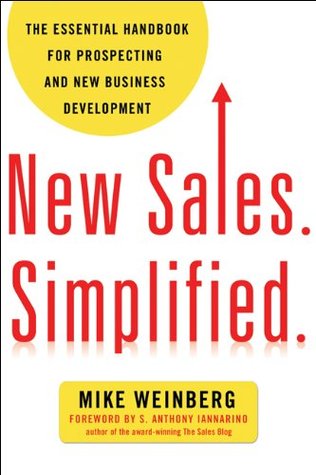More on this book
Community
Kindle Notes & Highlights
Read between
April 19 - April 19, 2025
Networking.
Social Media.
The Proactive Telephone Call.
Digital Marketing Tools:
The Initial Face-to-Face Sales Call.
Probing Questions.
Trade Shows.
Another prevalent indicator that companies do not have an effective story is an over-reliance on marketing tools and toys.
Stop talking about yourself and your company and begin leading with the issues, pains, problems, opportunities, and results that are important to your prospect.
Here’s what I took from this example: “We do this, that, and the other thing. We are so stinkin’ incredible that we feel the freedom to write record-length,
However, I feel obligated to warn that the worst myth being perpetrated by the 2.0 crowd is that we no longer need to make proactive telephone calls to prospects. What makes it so dangerous is that it’s exactly what so many reluctant prospectors want to hear. It’s a readily accepted false teaching because it provides a wonderful excuse not to do one of the most important yet incredibly unpopular sales tasks.
When we come to the understanding that our motivation for making the call is rooted in the fact that we can probably help the prospect, everything changes.
particularly if we believe
However, I am a big proponent of call outlines and scripted talking points.
Before getting into the flow of the call and outlining techniques to be more successful, it’s necessary to answer a defining question: Why are we making this call?
Stop overqualifying. Laser focus on the objective and score that meeting.
“I head up…”
The most beneficial thing the inside rep can do is listen. Work hard to learn about the prospect’s current situation and record helpful information that will be useful as you continue working the account, seeking to uncover opportunities.
Visit. I like to ask the prospect to visit with me. “Appointment” sounds so clinical, and no one is sitting around wishing for another meeting to attend. “Visit” is a positive word. You visit with family and friends. “I’d like to visit with you…” or “Would you have thirty minutes to visit with me next Tuesday or Wednesday?” 2. Fit. “Fit” is one of my overall favorite sales words. It demonstrates confidence and also disarms the prospect. It’s nonthreatening and shows you’re not desperate. “Let’s get together to see if we might be a fit to help you…” or “I’d like to learn more about your
...more
This highlight has been truncated due to consecutive passage length restrictions.
New business development success results from creating a sales dialogue, not perfecting a monologue.
Slightly adapt your approach to be more like the customer.
Sharing your agenda to set up the call is an incredible opportunity to position yourself and your company. I strongly encourage you to invest the time and energy to master this technique.
More selling can be accomplished by asking a series of great questions
The old adage says that people buy from people they like. I couldn’t agree more, and there’s no better way to earn people’s affection than to help them get what they want.
What’s going on in your customers’ space? Who are they up against in the market? What industry trends are working for or against their situation? Are there corporate initiatives or new strategies catalyzing change? Is there pressure to grow and expand or to reduce costs?
Your objective is to gather every morsel of information to identify if and how you can help this prospect.
You don’t get paid for working hard and cranking out proposals. You earn your keep closing deals and booking revenue!
While it seems counterintuitive, sometimes the best way to speed up closing a deal is to slow down the sales process to gain the necessary information.
Along with yourself, who else really cares about this issue? (That
Where are you in the process of evaluating options? Where will the money come from to fund this initiative? This is a significant decision. How committed are you to making a change? What is the likelihood
Tell me the criteria you’ll use to make your decision. How will you decide? What other alternatives are on the table?
Take full advantage of what you’ve learned to tailor your message for this particular prospect.
Define and Schedule the Next Step
One question—“What do you suggest as an appropriate next step?”—is all it takes to bridge toward agreement on what comes next.
Buyer’s resistance to salespeople is so strong and so prevalent that it requires us to have a second objective for every aspect of our sales attack.
lead with client issues whenever we communicate.
By sales law, a first meeting cannot be a presentation. Ever.
Slide 1: Title Slide Slide 2: Suggested Agenda Slide 3: Companies Turn to (Insert Your Company Name) When . . . (Here you’ll want to grab three to five relevant bullets from the “client issues” section of your power statement.) Slide 4: Our Understanding of Your Situation . . .(List several items you have learned from discovery work up to this point.)
Tell the audience that you think it would be beneficial to stop at this slide for a while. Ask your audience for input. Where did you nail it right on the head? What issues did you misunderstand or not properly grasp? Even better, ask the most senior person in the room to rank or prioritize the items on that slide. Make every effort to confirm the assumptions you’re sharing.


